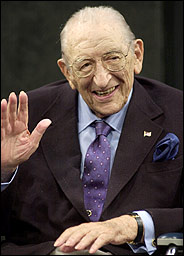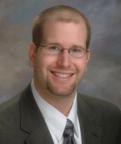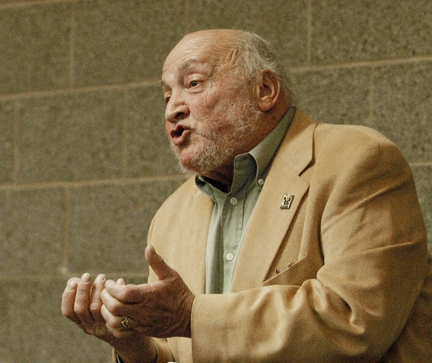From JTA.org
Large Conservative synagogue names
female rabbi in ‘groundbreaking’ move
By Chanan Tigay
NEW YORK, March 10 (JTA) — Twenty years after the Conservative movement began ordaining women as rabbis, a large New Jersey congregation has chosen a woman to fill its top rabbinic post, a development movement leaders are hailing as “groundbreaking.”
The board of Congregation Beth El in South Orange voted on March 7 to appoint Rabbi Francine Roston, 36, as the synagogue’s spiritual leader.
The shul boasts 575 families.
Once it becomes official — the contract has not yet been finalized — Roston’s appointment as senior rabbi will be the first of a woman to such a post at a Conservative synagogue with more than 500 families.
“We see this as groundbreaking,” said Rabbi Perry Raphael Rank, president of the Rabbinical Assembly, the Conservative movement’s rabbinical arm.
“It’s groundbreaking from the perspective that we have been talking about a glass ceiling, and she has broken that glass ceiling and risen to a much larger congregation than women have risen to until this point,” said, Rank, who is the spiritual leader of Midway Jewish Center in Syosset, N.Y.
Roston, who since 1999 has been rabbi of Congregation Beth Tikvah in New Milford, N.J., will be replacing the synagogue’s longtime rabbi, Jehiel Orenstein, who held the pulpit for some 35 years.
Roston is married and has two children.
“Our feeling was, all things being equal, we would probably have hired a male rabbi — but all things weren’t equal,” said Aaron Nierenberg, co-chair of Beth El’s search committee.
“Rabbi Roston impressed us with her knowledge, sense of energy, sense of humor, warmth. Most specifically, she has a record of achievement. When she sets her mind to doing something, she makes it happen.”
Asked whether the committee views itself as having done something pioneering in hiring Roston, Nierenberg said, “We really don’t see it that way. We really don’t.”
Beth El received 20 applications for the position, and offered 10 of the initial applicants telephone interviews. Of this group, three were women. The list was then narrowed to three finalists, each of whom visited the synagogue for a weekend to lead services, lecture and meet the congregation. Of the final three, only Roston was female.
Women now constitute roughly 11 percent of the nearly 1,600 members of the Rabbinical Assembly.
According to a Conservative movement survey released over the summer, 83 percent of the assembly’s 177 women pulpit rabbis lead congregations of fewer than 250 families, while 17 percent lead shuls of between 250 and 499 families.
By contrast, 27 percent of men lead congregations of less than 250 families, 48 percent lead mid-size congregations and 25 percent lead congregations of more than 500 families.
In 1994, after she served as its assistant rabbi for some four years, Chicago’s Am Yisrael synagogue — which has 500 member families — appointed Rabbi Debra Newman Kamin as its sole rabbi.
At that time, Am Yisrael was the first congregation in the Chicago metropolitan area to be headed by a woman, and, until now, was the largest Conservative congregation in the country to have a woman rabbi at its helm.
“It’s been 20 years now that we’ve had women ordained as rabbis from within our movement and they’ve proven themselves to be extremely capable,” said Rabbi Reuven Hammer, immediate past president of the International Rabbinical Assembly.
“I think we’re reaching a new period of time now when congregations are no longer looking at women rabbis as strange and something that they’re not interested in.”
Still, Roston’s appointment comes as questions about gender equality in the Conservative rabbinate linger.
According to the movement survey released over the summer, Conservative women rabbis are paid less, occupy fewer senior positions and are more likely to be unmarried than their male counterparts.
The Reform movement, which began ordaining women in 1972, has at least 15 women serving in senior rabbinic positions at congregations with 500 or more households as members.
Since 2001, for example, Rabbi Marcia Zimmerman has been senior rabbi at Temple Israel in Minneapolis, a congregation of over 1,900 families.
Rabbi Janet Marder, president of Reform’s Central Conference of American Rabbis, has been the top rabbi at Congregation Beth Am is Los Altos Hills, Calif., a congregation of almost 1,300 households, since 1999. In 1988, Rabbi Emily Lipof was appointed senior rabbi at Temple Ohabei Shalom in Brookline, Mass., a congregation of more than 600 families.
Of the twelve largest Reconstructionist congregations in the United States, four have women as their senior rabbis, and one has a female assistant rabbi. These shuls range in size from 1,000 member units at the high end down to 237 members on the smaller side. Twenty-four of the movement’s 106 total synagogues have women as either senior or assistant rabbis.
Roston, for her part, told the New Jersey Jewish News that as a rabbinical student at the Jewish Theological Seminary in the 1990s, she did not consider herself a pioneer.
“In rabbinical school, my classmates and I saw ourselves as the second generation,” she said. “We weren’t among the first who broke the doors down in ’84 and ’85, who had been there fighting the battles.”
Still, she added, once she had graduated from JTS in 1998, “we realized that in the Conservative movement, we were the first generation.”
That, she said, was because, though the heated clash over whether or not to ordain women as rabbis roiled the seminary, it hadn’t very deeply affected the movement’s congregations.
But today, Hammer said, women rabbis have left their mark on the movement.
“Once it’s demonstrated that it can work, the opposition to it becomes much lees than it was before — and I think we’ve reached that point,” he said.
 Below is an article from
Below is an article from  He’s much older now and has done what very few Jewish kids from West Bloomfield, Michigan get to do in college — start as the point guard for the University of Michigan varsity basketball team.
He’s much older now and has done what very few Jewish kids from West Bloomfield, Michigan get to do in college — start as the point guard for the University of Michigan varsity basketball team.


 Reform Rabbi Jennifer T. Kroll (Temple Israel) and Conservative
Reform Rabbi Jennifer T. Kroll (Temple Israel) and Conservative 